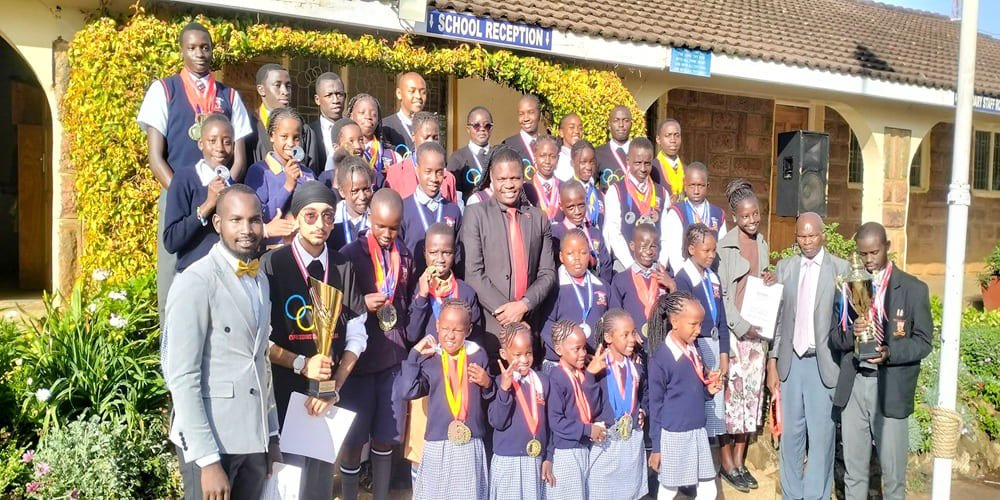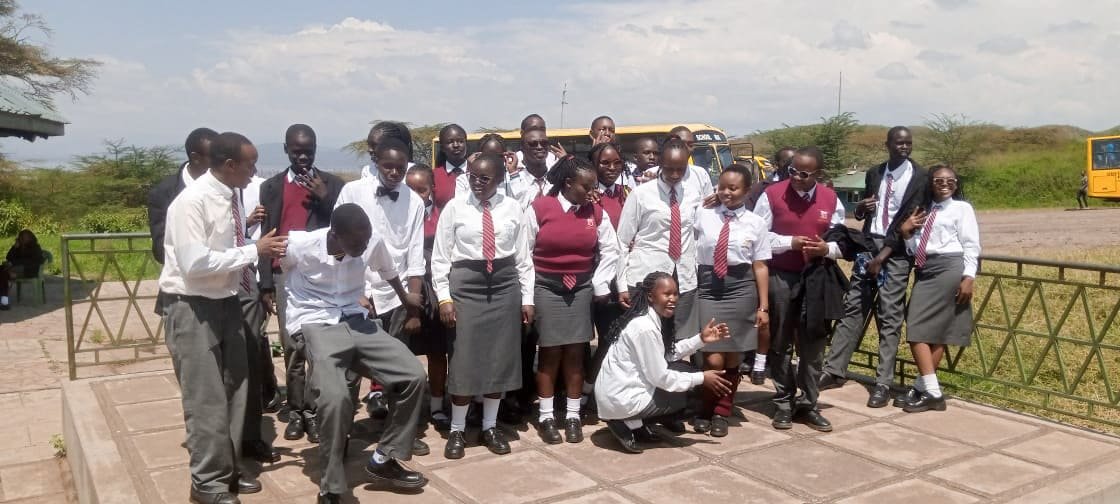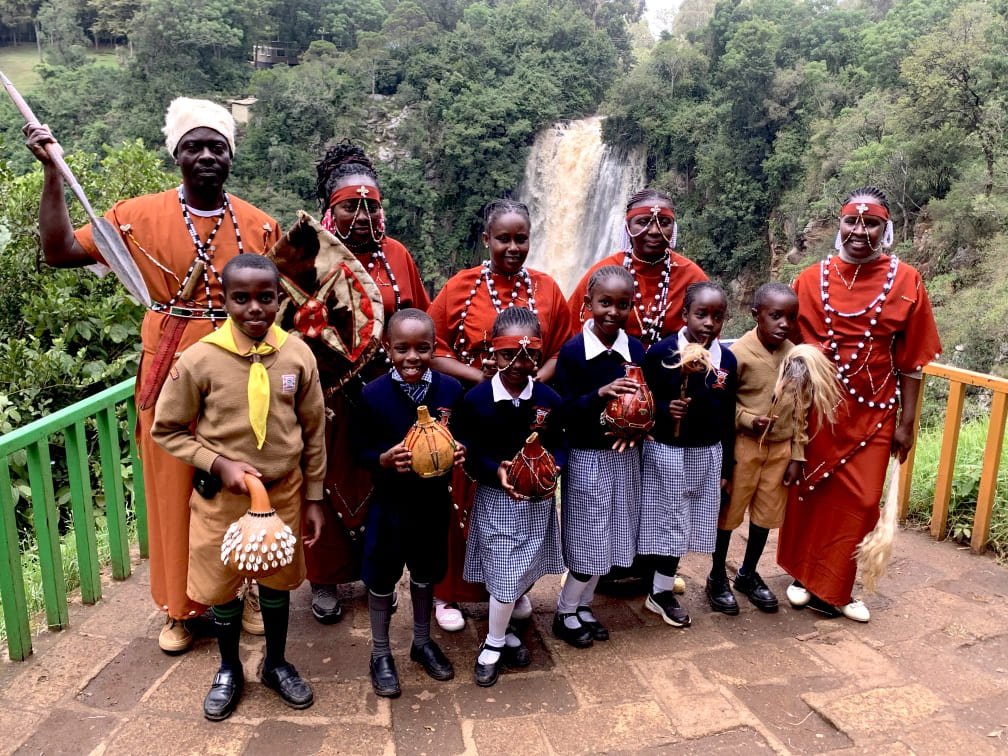On a cool, early morning of our long-awaited trip, our secondary school students assembled at the school compound full of energy and excitement. By 6:00 am sharp, we departed from school and embarked on an educational journey that would leave lasting memories.
Our first stop was in Nakuru City, where we arrived at Nakuru Travelers Inn at 9:25 am for breakfast. The refreshing break offered a chance to relax and fuel up for the adventure ahead. By 10:30 am, breakfast was done, and we were back on the road, headed to Lake Nakuru National Park.
We arrived at the park gate by 11:40 am, welcomed by the natural beauty of one of Kenya’s most iconic ecological treasures.
Exploring Lake Nakuru National Park
Nestled at 1,754 meters above sea level, Lake Nakuru lies in the southern region of Nakuru County, within the Great Rift Valley. This protected area is internationally renowned for its breathtaking views and abundant biodiversity. The lake is especially famous for its pink flamingos, both greater and lesser species, which create a stunning spectacle along the shoreline. Interestingly, these flamingos primarily breed at Lake Natron, yet gather in great numbers here due to the lake’s favorable conditions.
Lake Nakuru National Park is also home to:
-
Over 400 bird species, making it a haven for bird watchers.
-
More than 50 mammal species, including white and black rhinos, buffaloes, hippos, giraffes, zebras, impalas, baboons, warthogs, colobus monkeys, and lions, among others.
Our Wildlife Encounters and Learning Moments
Our students had the unique opportunity to observe and learn about various animals in their natural habitat. During the game drive, we encountered giraffes gracefully walking through the acacia, impalas and warthogs grazing, hippos lazing by the water, and baboons interacting with troops. These experiences allowed our learners to better understand the balance and interdependence of a savannah ecosystem, with Lake Nakuru acting as a vital water source. A key highlight of the trip was a visit to the Makalia Waterfalls, located at the southern end of the park. Though seasonal, the waterfall—fed by the Makalia River—offered a tranquil scene and served as a perfect spot for nature photography and reflection.
Return Journey
By 4:00 pm, as we began exiting the park, the weather took a turn and rain began to fall, adding a touch of adventure to the closing leg of our tour. We had a late lunch at 4:40 pm, then started our journey back to Eldoret. Despite the rains that accompanied us from Nakuru to Burnt Forest, our spirits remained high. We safely arrived back at school at 9:45 pm, filled with knowledge, awe, and appreciation for Kenya’s natural heritage.
Final Thoughts
The trip was more than just sightseeing—it was a meaningful exploration that combined environmental education, team bonding, and real-world learning. Our students returned with a deeper respect for wildlife conservation and an even greater sense of curiosity about the world around them. Indeed, it was a day well spent—full of adventure, learning, and laughter.


